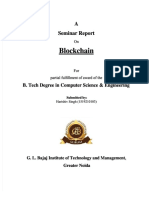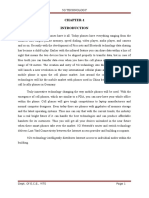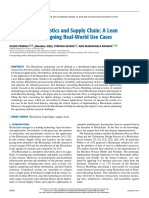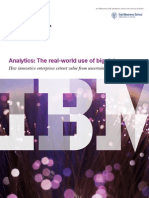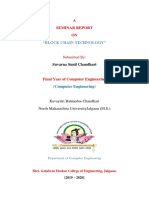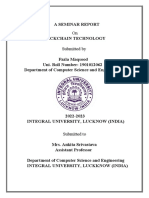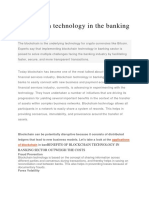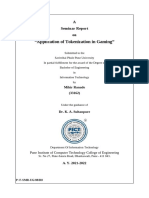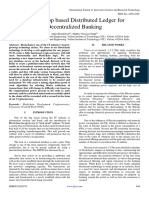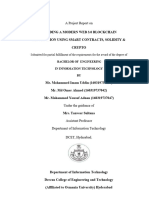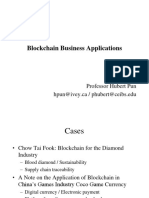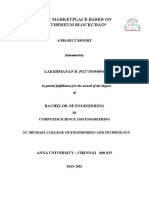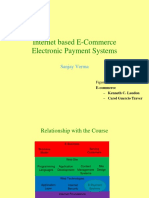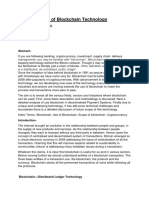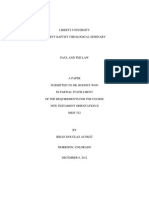0% found this document useful (0 votes)
133 views8 pagesBlockchain
This document provides information about blockchain technology. It begins by defining blockchain as a decentralized, distributed public digital ledger used to record transactions across multiple computers without needing a centralized server. It then discusses the history of blockchain, which originated from the digital currency Bitcoin in 2008. The document outlines several potential impacts of blockchain technology, such as increasing efficiency in banking, payments, cybersecurity, the internet of things, government services, crowdfunding, healthcare and more. It concludes by describing how blockchain could change these industries and the world.
Uploaded by
lintangCopyright
© © All Rights Reserved
We take content rights seriously. If you suspect this is your content, claim it here.
Available Formats
Download as DOCX, PDF, TXT or read online on Scribd
0% found this document useful (0 votes)
133 views8 pagesBlockchain
This document provides information about blockchain technology. It begins by defining blockchain as a decentralized, distributed public digital ledger used to record transactions across multiple computers without needing a centralized server. It then discusses the history of blockchain, which originated from the digital currency Bitcoin in 2008. The document outlines several potential impacts of blockchain technology, such as increasing efficiency in banking, payments, cybersecurity, the internet of things, government services, crowdfunding, healthcare and more. It concludes by describing how blockchain could change these industries and the world.
Uploaded by
lintangCopyright
© © All Rights Reserved
We take content rights seriously. If you suspect this is your content, claim it here.
Available Formats
Download as DOCX, PDF, TXT or read online on Scribd
/ 8


